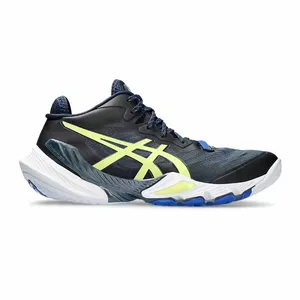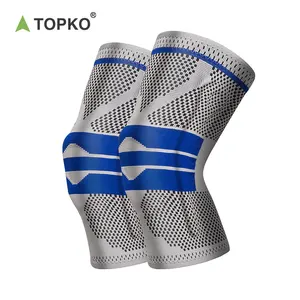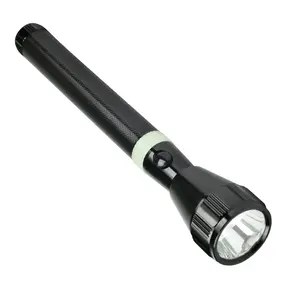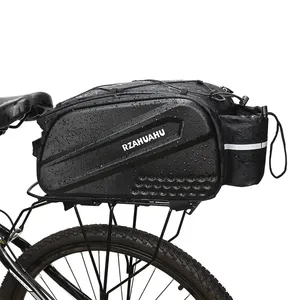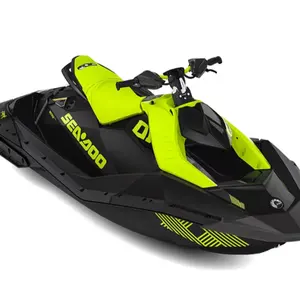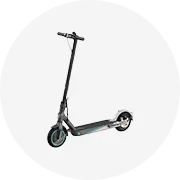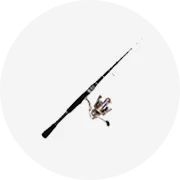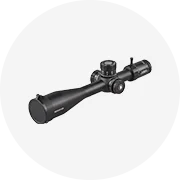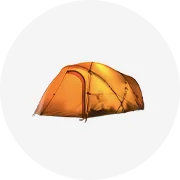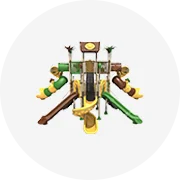Sektörünüzde popüler






Ticari dondurma yapma makinesi tam otomatik paslanmaz çelik otomat yumuşak hizmet dondurma makinesi için iş
₺32.155,62 - ₺33.523,94
Minimum Sipariş Miktarı: 1 Adet







Çin'de yapılan en iyi atlet Fitness kurtarma buz banyosu Chiller su soğutucu 1hp terapi soğuk dalma spa chiller
₺11.972,84 - ₺16.419,89
Minimum Sipariş Miktarı: 1 Adet







Naiya ucuz su 1.5HP sıcak ve soğuk soğutucu için buz banyosu küvet soğuk dalma soğutucu ekipmanları için spor kurtarma soğuk banyo Chiller
₺19.840,70 - ₺21.209,03
Minimum Sipariş Miktarı: 10 Adet

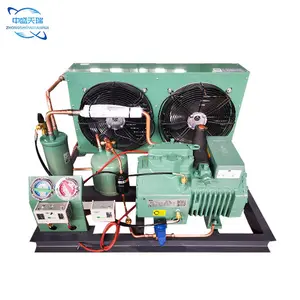





Düşük sıcaklık soğutma hava soğutma ekipmanları bitsoğutucu soğuk oda açık tip yoğuşmalı ünite Bitzer dondurulmuş et
₺17.104,05 - ₺64.995,39
Minimum Sipariş Miktarı: 1 Takım






Bulut dönemi 2024 yeni değiştirilebilir nokta buz titanyum artı 4K diyot lazer epilatör alexandrite üçlü lazer epilasyon makinesi
₺131.701,19 - ₺153.936,45
Minimum Sipariş Miktarı: 1 Takım







KINGWELL 1ton 3ton 5ton 20t tüp buz yapım makinesi makineleri buz teçhizatı makine güney amerika'ya satmak
₺273.664,80
Minimum Sipariş Miktarı: 1 Takım


Yüksek teknoloji 2tons tüp buz makinesi soğuk içecek için tüp buz makinesi satılık güney amerika ülkeleri için
₺349.948,87 - ₺406.392,23
Minimum Sipariş Miktarı: 1 Takım






Icesouth IMT1 yüksek teknoloji 1ton tüp buz makinesi güney amerika ülkeleri için buz tüpü makinesi
₺222.352,65 - ₺256.560,75
Minimum Sipariş Miktarı: 1 Takım






Koller sıcak satış 5000kg tüp buz yapım makinesi rulo buz makinesi güney amerika için
₺601.549,44 - ₺691.687,79
Minimum Sipariş Miktarı: 1 Takım






2ton/24 saat endüstriyel tüp buz yapım makinesi otomatik tüp buz makinesi
₺421.409,59 - ₺438.513,64
Minimum Sipariş Miktarı: 1 Takım






2024 yeni tasarım tam paslanmaz çelik 304 buz tüpü makinesi ile güney amerika için melez kompresör
₺342.081,00 - ₺547.329,60
Minimum Sipariş Miktarı: 1 Takım






Güzel kalite tüp buz makinesi 2-3tons buz yapım makinesi otomatik tüp buz yapma ünitesi
₺359.835,01 - ₺381.009,82
Minimum Sipariş Miktarı: 1 Takım
İlgili Aramalar:
tüp buz makinesi malezyayüksek teknoloji tüp buz makinesitüp buz makinesi fiyat için malezyatüp buz makinesi için myanmartüp buz makinesi için pakistantescool buz makinesienerji tasarrufu tüp buz yapma makinesibuz tüp makine focusunviski buz makinesiticari yenilebilir tüp buz makinesisu buz makinesi, küçük kapasitelibuz yapım makinesi su tankıendüstriyel buz değirmenibuz tüp makine yemek15t tüp buz makinesi











Büyük Freon tüp buz yapım makinesi fiyat için yenilebilir buz Güney Amerika
₺342.081,00 - ₺10.262.430,00
Minimum Sipariş Miktarı: 1 Takım






Icesouth IMT1 yüksek teknoloji 1ton tüp buz makinesi güney amerika ülkeleri için buz tüpü makinesi
₺222.352,65 - ₺256.560,75
Minimum Sipariş Miktarı: 1 Takım






3ton 5on 10ton tüp buz yapım makinesi rulo buz yapma makinesi için güney amerika/güneydoğu asya
₺273.664,80
Minimum Sipariş Miktarı: 1 Takım






Silindir tüp buz makineleri otelde kullanılan ve kafe güney amerika 15 ton/gün( tv150)
₺1.881.445,50
Minimum Sipariş Miktarı: 1 Takım






Tüp buz makinesi 2 ton endüstriyel buz makinesi otomatik tüp buz makinesi
₺359.835,01 - ₺381.009,82
Minimum Sipariş Miktarı: 1 Takım






2 ton endüstriyel buz makinesi tüp buz makinesi otomatik buz makinesi
₺359.835,01 - ₺381.009,82
Minimum Sipariş Miktarı: 1 Takım






2024 için kuzey güney amerika için buz teçhizatı en popüler buz tüpü makinesi 2 ton
₺342.081,00 - ₺547.329,60
Minimum Sipariş Miktarı: 1 Takım






KINGWELL 1 ton 3t 5t 10t buz tüp makinesi endüstriyel küp blok Flake yapma buz makineleri
₺342.081,00
Minimum Sipariş Miktarı: 1 Takım






Makine bir Glace bir tüp De 15 ton avrupa Haute Qualite dökmek restoran
₺1.398.598,17 - ₺1.608.464,87
Minimum Sipariş Miktarı: 1 Takım






Kaliteli otomatik tüp buz yapma makinesi tüp buz makinesi 2ton/24hr endüstriyel tüp buz yapım makinesi
₺421.409,59 - ₺438.513,64
Minimum Sipariş Miktarı: 1 Takım






KINGWELL 500kgs filipinler/malezya/güney amerika/suudi arapça satılık 50ton tüp buz yapma makinesi
₺342.081,00
Minimum Sipariş Miktarı: 1 Takım






D'usine Glace De makine De imalat Glace De Tube15000kg Avec Le Systeme De Refroidissement Par L'eau Koller
₺1.398.598,17 - ₺1.608.464,87
Minimum Sipariş Miktarı: 1 Takım






Tüp buz makinesi 2 ton endüstriyel buz makinesi otomatik tüp buz makinesi
₺359.835,01 - ₺381.009,82
Minimum Sipariş Miktarı: 1 Takım





kabuk ve tüp soğutucu buz su soğutucu güney amerika
₺239.456,70 - ₺410.497,20
Minimum Sipariş Miktarı: 1 Takım






Guangzhou fabrika doğrudan tedarik 3ton 5ton 10ton tüp buz yapma makinesi filipinler/güney amerika
₺342.081,00
Minimum Sipariş Miktarı: 1 Takım






Restoran için 15 ton tüp buz teçhizatı makine avrupa yüksek kalite tüp buz makinesi
₺1.398.598,17 - ₺1.608.464,87
Minimum Sipariş Miktarı: 1 Takım






Kaliteli otomatik tüp buz yapma makinesi tüp buz makinesi 2ton/24hr endüstriyel tüp buz yapım makinesi
₺421.409,59 - ₺438.513,64
Minimum Sipariş Miktarı: 1 Takım






Guangzhou KINGWELL fabrika doğrudan tedarik 3ton 5ton 10ton tüp buz yapma makinesi filipinler/güney amerika
₺342.081,00
Minimum Sipariş Miktarı: 1 Takım






Fabricant industriel de glacons comestibles 15 ton par jour makinesi bir glacons en tüp demi-küp dökün vendre rulo buz Koller
₺1.398.598,17 - ₺1.608.464,87
Minimum Sipariş Miktarı: 1 Takım






Güzel kalite tüp buz makinesi 2-3tons buz yapım makinesi otomatik tüp buz yapma ünitesi
₺359.835,01 - ₺381.009,82
Minimum Sipariş Miktarı: 1 Takım






CE onaylı Kingwell katı tam silindirler tüp buz makineleri
₺342.081,00
Minimum Sipariş Miktarı: 1 Takım






2ton/24hr endüstriyel tüp buz yapım makinesi otomatik tüp buz makinesi
₺421.409,59 - ₺438.513,64
Minimum Sipariş Miktarı: 1 Takım






15000kg bir gün tüp buz yapma makinesi su soğutma sistemi ile buz teçhizatı tasarım Koller
₺1.398.598,17 - ₺1.608.464,87
Minimum Sipariş Miktarı: 1 Takım






KINGWELL yüksek çıkış tüpü buz yapım makinesi 500kgs 1ton 3ton 5ton 10ton buz yapma makinesi güney amerika için
₺171.040,50
Minimum Sipariş Miktarı: 1 Takım






2ton/24hr endüstriyel tüp buz yapım makinesi otomatik tüp buz makinesi
₺421.409,59 - ₺438.513,64
Minimum Sipariş Miktarı: 1 Takım






2 ton endüstriyel buz makinesi tüp buz makinesi otomatik buz makinesi
₺359.835,01 - ₺381.009,82
Minimum Sipariş Miktarı: 1 Takım






2 ton endüstriyel buz makinesi tüp buz makinesi otomatik buz makinesi
₺359.835,01 - ₺381.009,82
Minimum Sipariş Miktarı: 1 Takım
En iyi kategoriler
güney amerika tüp buz makinesi hakkında
Bir atari salonu ya da lüks bir ev içi oyun odası için, en çekici olanı bulun. Alibaba.com'da güney amerika tüp buz makinesi. Bunlar. güney amerika tüp buz makinesi, yüksek kaliteli ve uzun ömürlü ürünleriyle tanınan güvenilir markalara aittir. Bu öğeler, maksimum işlevsellik sağlamak için güzelce tasarlanmıştır. Ürünler, profesyoneller, atari salonu sahipleri veya meraklılar gibi her tür alıcıya uyacak şekilde çeşitli boyutlarda sunulmaktadır. Bu ürünler hem çocuklar hem de yetişkinler için saatlerce sürecek sonsuz eğlence sağlayacaktır.
. Alibaba.com'da sunulan güney amerika tüp buz makinesi, üzerinde oynanabilecek oyunların türünü ve hızını belirleyen farklı boyutlardaki diskler için tasarlanmıştır. Bunlar, sorunsuz ve kusursuz bir oyun deneyimi sağlayan ve masayı yıpratma tehlikesi olmadan uzun süre kullanılabilen güçlü üfleyici motorlara sahiptir. Duvarlar ayrıca, diskler için mükemmel bir geri tepme sağlayacak şekilde inanılmaz derecede güçlü ve güvenilir olacak şekilde inşa edilmiştir.
Bunlar. güney amerika tüp buz makinesi çeşitli dış tasarımlarda ve renklerde mevcuttur. Bazıları sportif ve profesyonel görünmek için tasarlanırken, diğerleri, özellikle çocuklar için tasarlanmış olanlar, yanlara grafik olarak basılmış sevimli motiflere ve karakterlere sahiptir. Bunların sağlam ayakları ve yapısı, onları herkes için ideal seçim haline getirir.
Geniş yelpazeden seçim yapın. Alibaba.com'da güney amerika tüp buz makinesi ve en uygun olanları satın alın. Ürünler, eğlence deneyimlerini yükseltmek isteyen herkes için harika bir satın alma olacaktır. Bunlar aynı zamanda dayanıklı ürünleri rekabetçi fiyatlarla toplu olarak satın almak isteyen tedarikçiler için de mükemmel şekilde uygundur.
. Alibaba.com'da sunulan güney amerika tüp buz makinesi, üzerinde oynanabilecek oyunların türünü ve hızını belirleyen farklı boyutlardaki diskler için tasarlanmıştır. Bunlar, sorunsuz ve kusursuz bir oyun deneyimi sağlayan ve masayı yıpratma tehlikesi olmadan uzun süre kullanılabilen güçlü üfleyici motorlara sahiptir. Duvarlar ayrıca, diskler için mükemmel bir geri tepme sağlayacak şekilde inanılmaz derecede güçlü ve güvenilir olacak şekilde inşa edilmiştir.
Bunlar. güney amerika tüp buz makinesi çeşitli dış tasarımlarda ve renklerde mevcuttur. Bazıları sportif ve profesyonel görünmek için tasarlanırken, diğerleri, özellikle çocuklar için tasarlanmış olanlar, yanlara grafik olarak basılmış sevimli motiflere ve karakterlere sahiptir. Bunların sağlam ayakları ve yapısı, onları herkes için ideal seçim haline getirir.
Geniş yelpazeden seçim yapın. Alibaba.com'da güney amerika tüp buz makinesi ve en uygun olanları satın alın. Ürünler, eğlence deneyimlerini yükseltmek isteyen herkes için harika bir satın alma olacaktır. Bunlar aynı zamanda dayanıklı ürünleri rekabetçi fiyatlarla toplu olarak satın almak isteyen tedarikçiler için de mükemmel şekilde uygundur.
